“Thailand is what you make it.” That’s what an ex-pat Westerner who relocated here a few years ago told us when we were strolling through Nakhon Sawan, a busy city in the country’s central/lower north region.
This seems true in many regards, or at least from the on-the-ground impressions we have formed while walking an estimated 580 kilometers from Bangkok to Mae Sot.
Like every place, Thailand has curiosities that paint a picture of everyday life, that show what a country values, and that tell a story of how people interact with their cities and towns. Thailand has a number of aspects where justice, livability, sustainability, and resilience converge and, sometimes, collide in cities.
Exercise for a happy life
For instance, we were consistently surprised by the amount of outdoor exercise options we found. In most of the urban green spots, parks and riverside promenades we walked by, we saw free exercise equipment, well-maintained children’s playground areas, good-sized group sport courts, and manicured gardens within the parks.
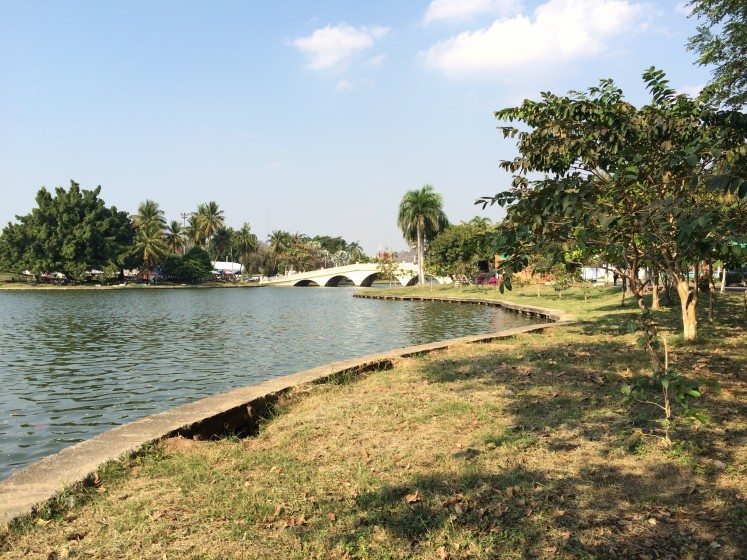
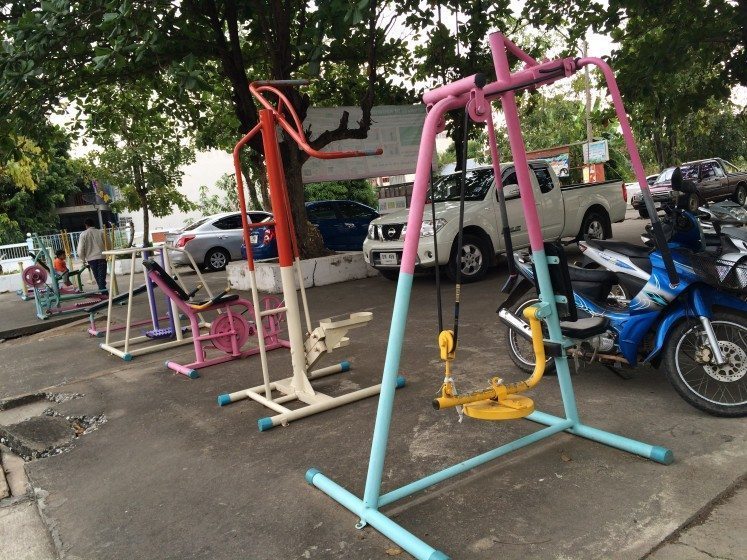
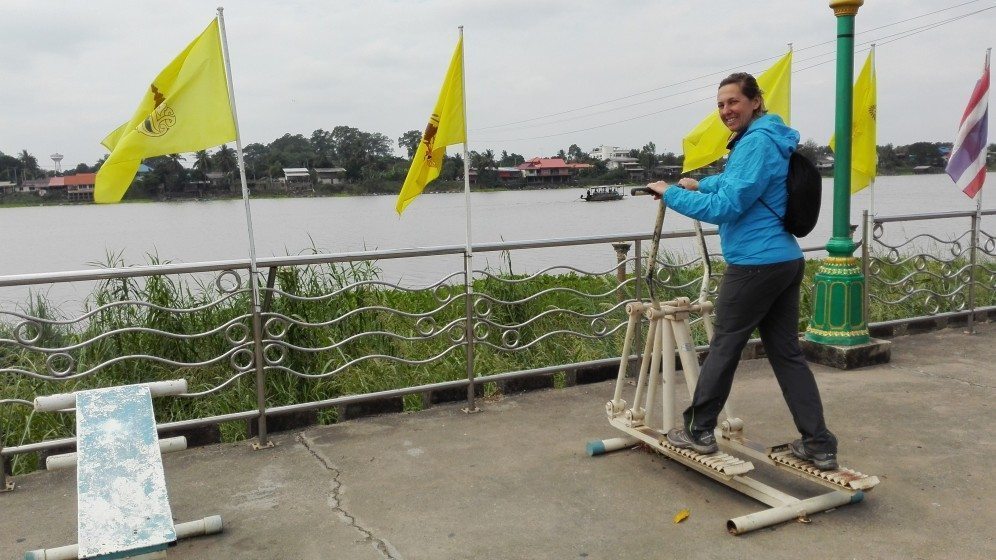
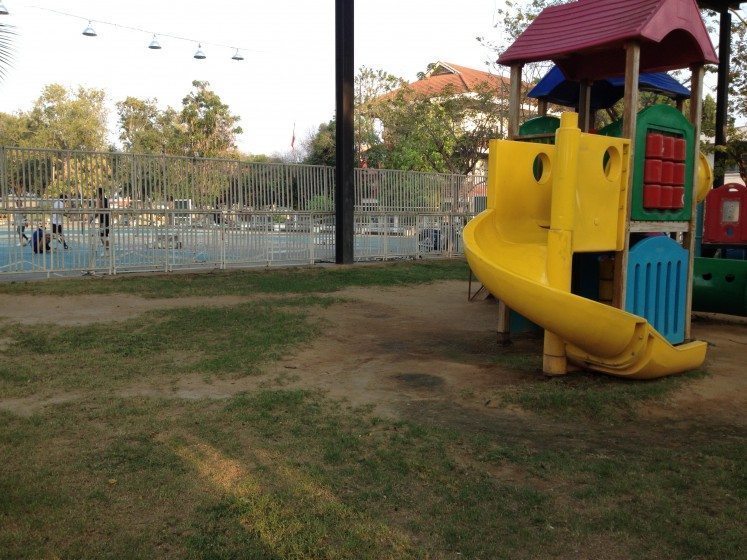
From Bangkok to Kamphaeng Phet, we saw plenty of open spaces where people could safely jog, cycle, walk, play volleyball, or simply relax. The exercise equipment, which allows citizens to do a variety of basic stretches with a wide range of motion seemed newly installed in some places and a bit more rudimentary or run-down in others; it appears so frequently, though, that we’ve convinced ourselves that it is not a coincidence. It’s as if there is a national mandate that parks will have exercise equipment accessible to everyone and that exercise helps foster a better quality of life and a happier existence, although an Internet search doesn’t reveal any such governmental guidance and our language barrier prevents us from having meaningful conversations with locals about this aspect of city living. Farther north, between Tak and Mae Sot, several national parks also provide the opportunity to be outdoors in nature, away from the truck traffic that clogs up Highway 12, the main artery linking the two cities.
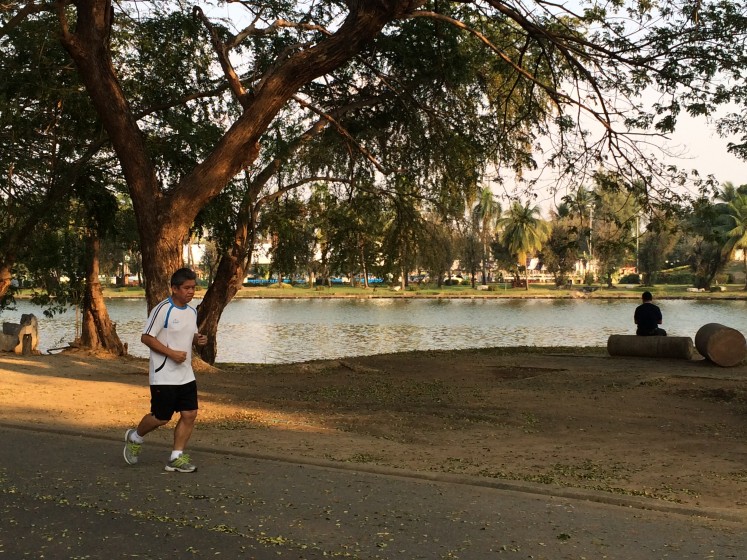
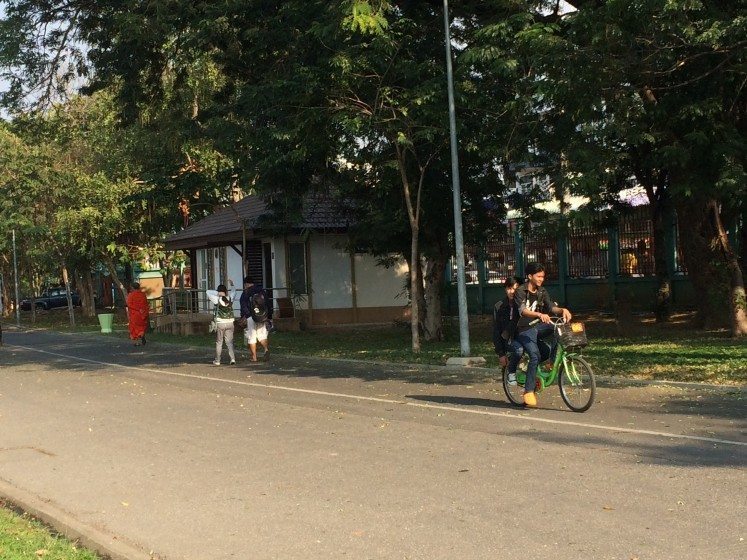
In and out of cities, a culture of bicycling seems to have taken root, too. With designated bike lanes in some provinces and wide shoulders on many of the secondary roads winding through the countryside, we often see individuals and small groups of cyclists, donning helmets and fancy cycling shirts and pants, riding in the early morning hours when we walk. And, in Mae Sot, we met a number of people who not only cycle for health, but also enjoy doing multiple-day bicycle tours in the province and outside of Thailand, down the road into Myanmar. Although people we encountered along the way don’t quite understand why we would walk through Thailand and don’t seem to have a natural love of walking (based on the simple observation that we don’t see many people walking on city streets), they often ask us, via a rolling hand motion that resembles pedaling, why we don’t take a bicycle instead. That implies to us that cycling is a “normal” means of transportation, something “normal people” do. We’re happy to see such prevailing logic, and perhaps it has deeper cultural roots dating back to when bicycles were commonly used and cars, motorcycles, and trucks were still luxury items.
Of course, in today’s Southeast Asia, the omnipresent moped means people don’t walk much from A to B. It’s much easier to hop on a moped for a few hundred meters than it is to get there by foot. More than once, we’ve seen people use their mopeds to go a couple blocks, which seems counterintuitive to the notion that exercise makes for a happy life, the message we interpret from all the exercise equipment and bike shops we see.
But, even if people wanted to walk more in their cities, we’re not quite sure how they would do that. Sidewalks in Thailand, as in many other countries, are not designed with pedestrian mobility in mind. In fact, pedestrian immobility is the more likely scenario. Sidewalks in every city we find ourselves in—when there actually are sidewalks—are mazes of inconsistent heights and widths that largely serve as extra space for setting up food carts and tables, selling vegetables or clothes, stockpiling plants, or parking motorcycles. It’s a maddening up and down workout, and we feel for the people who have to maneuver through cities or towns in wheelchairs or with crutches; they are forced to move on blacktop, a risky endeavor on highly-trafficked streets and roads.
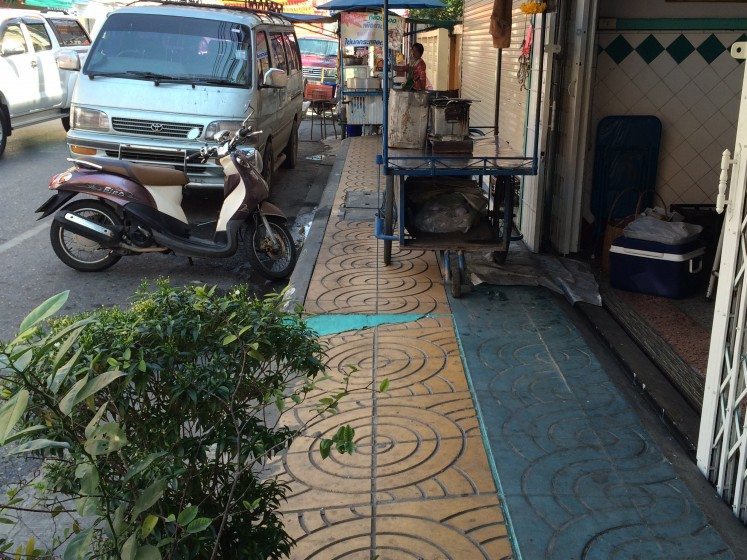
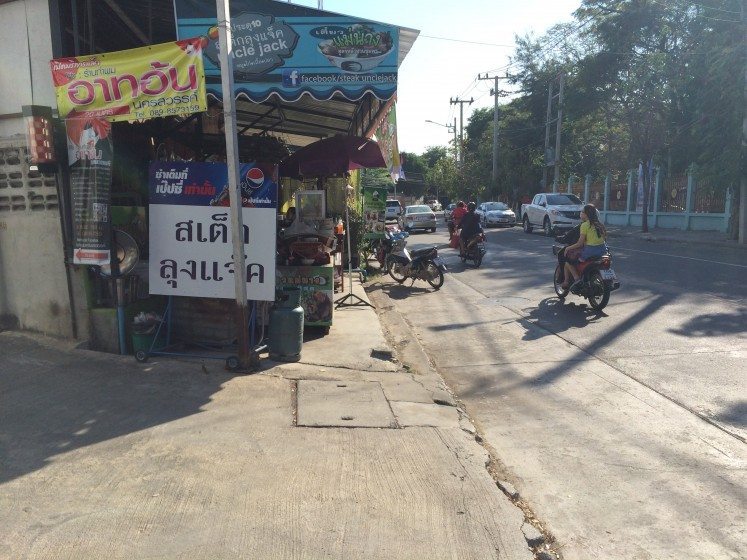
Infrastructure investment
While fixing sidewalks may not be the highest priority in Thailand, which has made many developmental and economic leaps since the first time we visited here many years ago, protecting itself, its farmlands, and its cities from natural disasters and flooding has clearly won investment attention.
Thailand suffered devastating flooding in 2011, which severely damaged homes and businesses, crippled exports, and battered the country’s economy. In the aftermath, the government budgeted 2.65 trillion baht (about $74 billion by today’s currency exchange) from 2012 to 2016 for infrastructure development, flood prevention, and water management, according to a 2012 report from Thailand’s Board of Investment.
Evidence of that spending was apparent as we walked near new and old dams and water control systems, parallel to irrigation canals in farming areas, and along roads that have been retrofitted with sloping drainage flow.
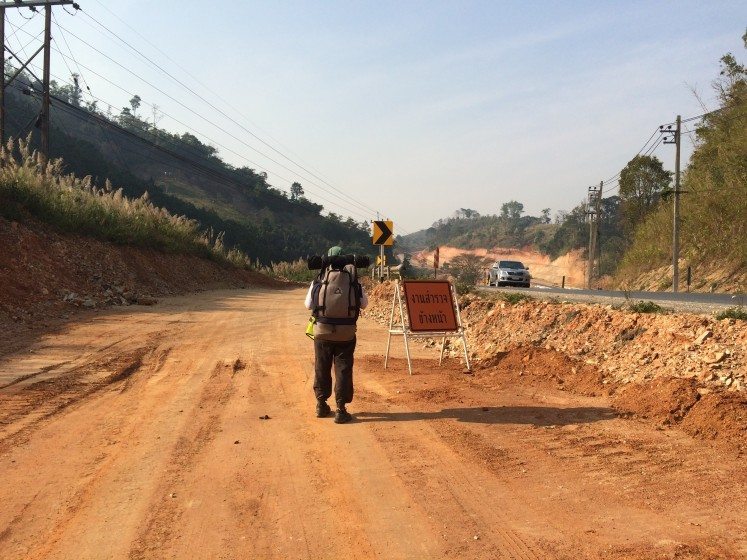
The opening up of Myanmar/Burma will also have a longer-term impact on residents living in border towns, such as Mae Sot. Already a bustling town filled with NGOs and Burmese refugees and migrant workers, the Thai government has designated the city as a special economic development zone, according to a government press release. Part of that investment includes facilitating trade with its neighboring country via a new highway on the Myanmar side of the border, widening the existing highway connecting Mae Sot to the Thai province’s main city of Tak, building a second bridge between Mae Sot and Myawaddy (Myanmar) to lessen congestion, expanding the local airport, and constructing an international university, according to the report and feedback we picked up from talking to locals.
Time will tell how those projects improve the livability of these cities and what their effects will be on the citizens that reside there.
Jenn Baljko
See more about the trip here.

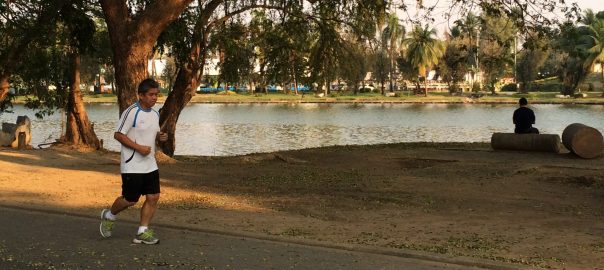






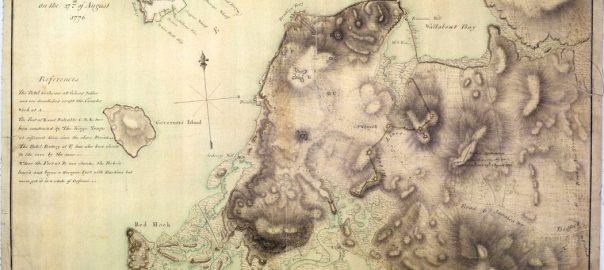
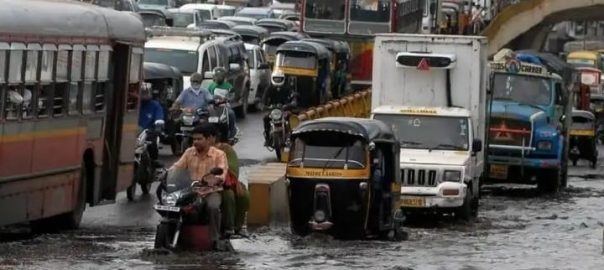
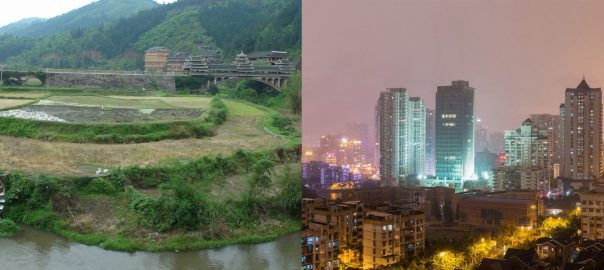
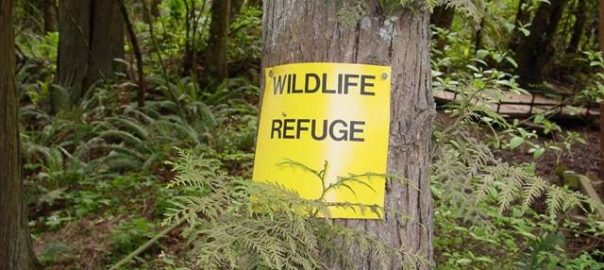
Add a Comment
Join our conversation